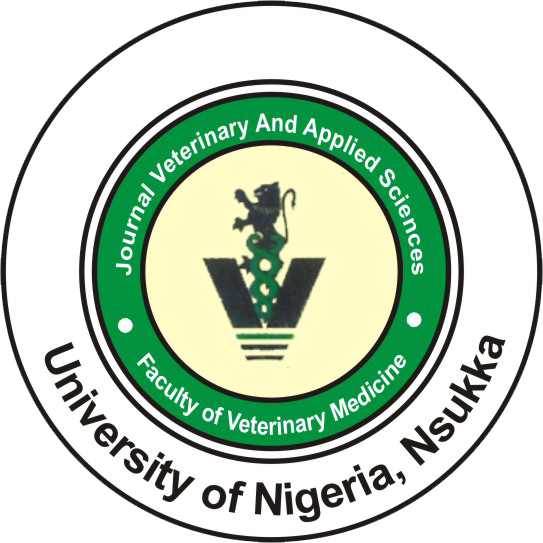University of Nigeria
ISSN: 2315 - 6856
e-ISSN: 2636 - 5553
Journal volumes
Powered by: RockSystems Global Services Ltd.
rocksystemsglobal@gmail.com (+2348035271306)
www.rocksystemsglobal.com
Volume 12: 2022 - Article IV
Abstract
Polythene materials that are sometimes used to package food/foodstuff in Nigeria greatly litter the environment and predispose scavenging animals, especially dogs, to gastrointestinal obstruction and its associated complications. A Canecorsor dog, which was fed with locally formulated food along two other dogs, reportedly vomited and progressively became anorexic and weak with lack of defecation until shortly before death four days later. Necropsy revealed pallor of visible mucous membranes, sunken eye balls in addition to considerable amount of blood-tinged mucopurulent peritoneal fluid. The liver, kidneys, and spleen were congested. Other lesions included swollen and firm stomach containing a plastic pipe wrapped in layers of polythene that continued into the plicated intestinal loops to cause occlusions at two different points with button-like intestinal perforations and multiple mucosal ulcerations. Microscopically, the lung, liver, spleen, kidneys, and intestinal lesions suggested vascular compromise secondary to multi-organ dysfunction. The authors believe that septic hypovolemic shock secondary to inadequate and poor-quality feeding might have contributed to the death of the dog. The inadequate feeding of the highly valued dog might have predisposed it to scavenging for food in unusual materials that resulted in intestinal obstruction and perforation-induced septic peritonitis responsible for its death. Prompt clinical intervention could have improved the prognosis of the case.
Keywords: Dog, Polythene foreign body, intestinal obstruction, Perforation, Septic peritonitis.
How to cite this article:
Audu Z and Abalaka SE (2022) A case of intestinal obstruction and perforation-induced septic peritonitis in a 4-year-old Canecorsor dog fed locally formulated food. Journal of Veterinary and Applied Sciences, 12: 25 – 31.

A CASE OF INTESTINAL OBSTRUCTION AND PERFORATION-INDUCED SEPTIC PERITONITIS IN A 4-YEAR-OLD CANECORSOR DOG FED LOCALLY FORMULATED FOOD
Zakariya Audu1, Samson E. Abalaka2
1Department of Animal Health and Production, University of Abuja, Abuja, Nigeria.
2Department of Veterinary Pathology, University of Abuja, Abuja, Nigeria.
Download .pdf copy here >>






